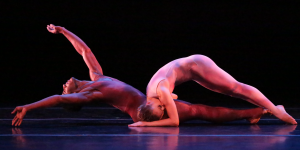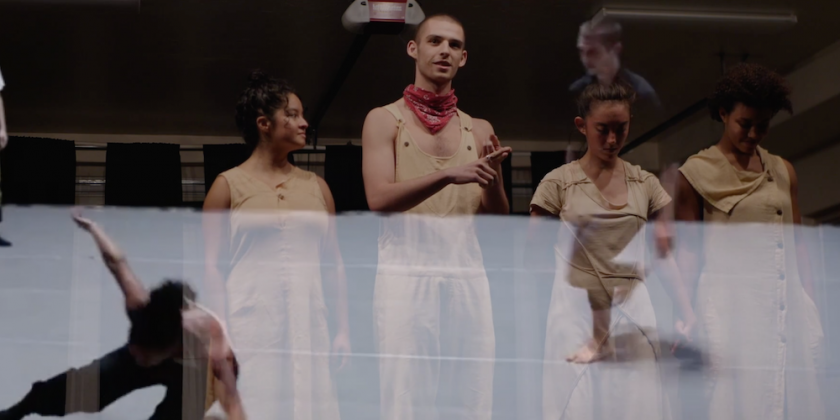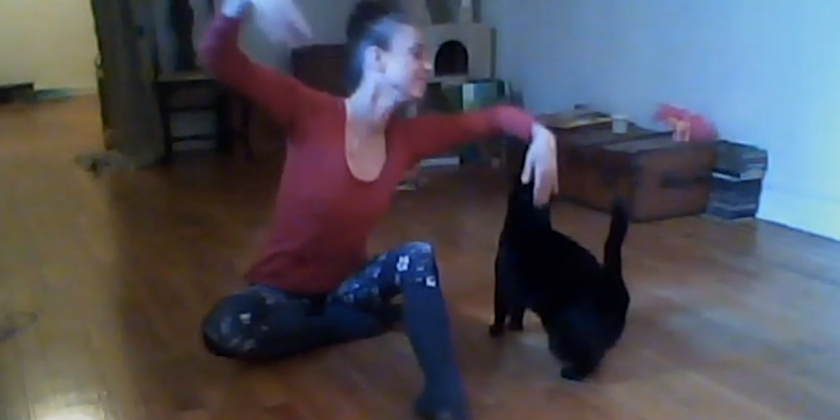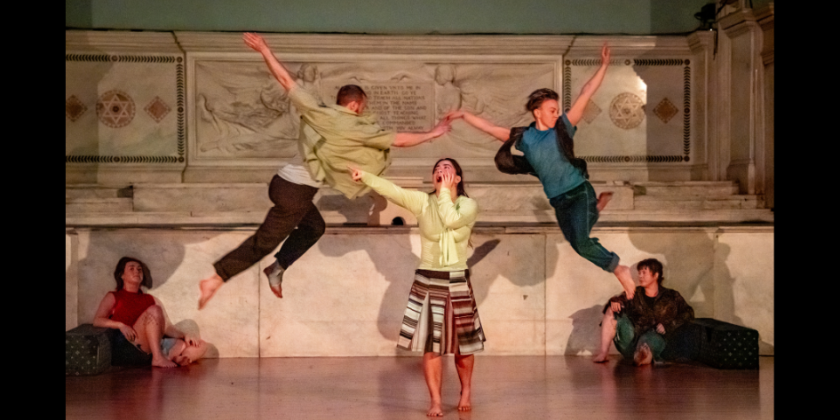Impressions of Jillian Peña’s World Premiere “Panopticon”
Co-presented by American Realness and Performance Space 122’s COIL Festival
Abrons Art Center
Created by Jillian Peña in collaboration with the dancers
Performed by Alexandra Albrecht and Andrew Champlin
Costumes by Christian Joy / Lighting by Kathy Kaufman
Music by Atticus Ross, Brian Eno & Harold Budd, Max Richter, David Bowie, Wendy Carlos & Rachel Elkind
Text by Alexandra Albrecht, Samuel Beckett, Andrew Champlin, Jillian Peña, and Tom Stoppard
Panopticon runs through January 17. For tickets go to Abrons Art Center.
In the 1930s, Harvard mathematician George David Birkhoff devised a formula to evaluate art using the concepts of symmetry and complexity. He posited an inverse relationship: If a work is highly complex, then less symmetry will result in a more appealing piece. The opposite holds true as well. Simpler artworks fare better when they are more symmetrical.
In Jillian Peña’s Panopticon, a world premiere at Abrons Art Center co-presented by American Realness and Performance Space 122’s COIL Festival, it seems that symmetry and its accompanying virtue — simplicity — reign. At first glance, the fifty-minute piece squeaks with order and cleanliness.
With an ostensible nod to Merce Cunningham, two performers, Alexandra Albrecht and Andrew Champlin, prick at and slice through the air with methodical developpés, leisurely arabesques, and defined petit battement sur le cou-de-pied (flutters of a pointed foot around the ankle). They even wear unitards — sporty pink-and-gray ones with patches of nude mesh.
Albrecht and Champlin tackle the onerous choreography with adequate dexterity and laudable intensity. The up-close seating (chairs line the perimeter with two arrowheads of seats that jut into the performing space) highlights the gritty details: gray-painted nails, sweat-speckled brows, dirty feet.
The two move in unison and, often, in mirror image to each other. This symmetry demonstrates the impossibility of twinning one body to another. Albrecht and Champlin try — hard — to maintain a steady, impassive execution, but their irrepressible personalities (he’s the delicate ingénue while she’s the brawny philosopher) smudge the sharp edges and tidy contours.
They speak: snippets of text from playwrights Samuel Beckett and Tom Stoppard plus contributions from Peña and the dancers. These passages evoke despair with Albrecht and Champlin’s deadpan delivery exacerbating the melancholia. They recite, rather than relate, phrases like “What do we do now, now that we are happy?” (from Beckett’s Waiting for Godot).
The give-and-take nature suggests a conversation between Albrecht and Champlin, but as their exchanges increasingly wind in circles, it feels like the words have been randomly programmed into them. “Done, done,” they say during a phrase of small jumps and crisscrossing arms when, clearly, they are not done, done. In one striking sequence, the two lie down and hold hands as they wiggle a circle with their connected feet. At the end, one says, “Well, that passed the time.” (also from Waiting for Godot). Their words destabilize the deliberate beauty of the actions, casting into doubt what we should accept as truth: the movement or the verbal message.
A chief pleasure of Panopticon comes from watching it unfold on one of the two mirrors positioned high on opposing walls. Against the dreamy, droning music, the academicism blurs and pools. In these literal mirrors, the specificity reflects back as ambiguity.
Maybe it’s all the lines from Waiting for Godot or maybe it’s the unrelenting sameness of the choreography or maybe it’s the piece’s title (a panopticon is a theoretical building that would allow many prisoners to be watched by one guard), but a sense of fatalism pervades. Not because if Albrecht and Champlin stop, then something will happen, but because if they do stop, then nothing will happen.
Share Your Audience Review. Your Words Are Valuable to Dance.
Are you going to see this show, or have you seen it? Share "your" review here on The Dance Enthusiast. Your words are valuable. They help artists, educate audiences, and support the dance field in general. There is no need to be a professional critic. Just click through to our Audience Review Section and you will have the option to write free-form, or answer our helpful Enthusiast Review Questionnaire, or if you feel creative, even write a haiku review. So join the conversation.













